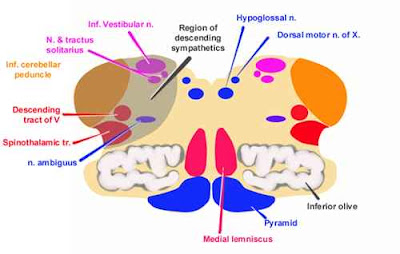
Cerebellar infarction was classified as territorial (PICA, SCA) and nonterritorial (mixed), ie, those that did not correspond to an arterial territory as defined by Amarenco et al. In each case the presence of associated brain infarctions in other regions (brain stem, thalamus, occipital), the presence of hydrocephalus, and the mass effect were analyzed. The inclusion criteria were age younger than 40 years at the time of the cerebellar infarction availability of detailed clinical information relating to risk factors, clinical manifestations, hospital course, and final outcome (clinical evaluation performed at hospital discharge) performance of a detailed neurological examination rheumatologic profile and hematologic tests documentation of the cerebellar infarction by means of CT or MRI and investigation of the mechanism of cerebellar infarction by means of transthoracic or transesophageal echocardiography, transcranial Doppler, and sonography of vessels of the neck. We analyzed retrospectively the clinical and radiological data from those patients with neuroimaging evidence of cerebellar infarction. Hematologic disturbances and migraine were responsible for a few cases.Īmong 1657 consecutive patients admitted to our stroke clinic from January 1986 to December 1996, 332 patients with brain infarction were younger than 40 years. Embolism from a cardiac source resulted primarily from patent foramen ovale and rheumatic valvular disease. The most common stroke mechanisms in each territory were as follows: PICA: nonatherosclerotic vasculopathic (67%), cardioembolic (20%), and hematologic and cryptogenic (each 7%) superior cerebellar artery: cardioembolic (42%), cryptogenic (31%), migrainous (21%), and nonatherosclerotic vasculopathic and hematologic (each 7%) and mixed territory: nonatherosclerotic vasculopathic (50%), cryptogenic (25%), cardioembolic (12%), and hematologic (12%).Ĭonclusions The most common mechanism of cerebellar infarctions was arterial occlusion as a result of intracranial vertebral artery dissection (40%), mainly with PICA involvement. Results In the 37 patients (mean age, 30 years), 29 infarcts were limited to one territory (15 in the posteroinferior cerebellar artery 14 in the superior cerebellar artery) 8 had nonterritorial infarctions. The patients had been studied extensively to determine the etiology of the cerebellar infarction. Methods We analyzed retrospectively the clinical and radiological data from 21 men and 16 women with cerebellar infarction admitted to our hospital from January 1986 to December 1996. The aim of this study was to determine the causes and mechanisms of cerebellar infarction in patients younger than 40 years. The most common etiologies in this age group are atherosclerosis and cardiac embolism.
Pica syndrome cerebellum series#
The average patient age in most reported series is 62 years.



Arteriosclerosis, Thrombosis, and Vascular Biology (ATVB).


 0 kommentar(er)
0 kommentar(er)
